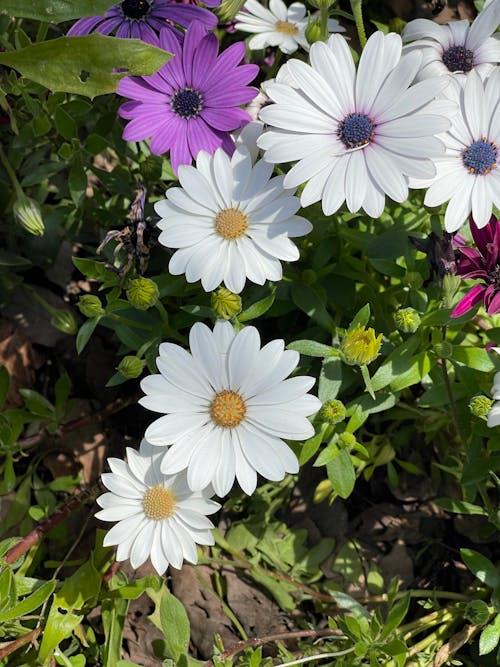Complete Guide to Growing African Daisy: Planting, Care and Propagation Tips
African daisy are an annual native in South Africa. Their flowers are bright, and their foliage is a silvery grey. In mild areas, the blossoms last for a long time. The petals of the flowers are colorful in the center and dazzling outside. Pink, green, brown, or gold can be seen in the center. In Zones 9–11, these plants thrive.

Overview of African Daisy
Common Name: African Daisy
Plant Type: Annual
Light: Sun
Flower colors: Yellow, White, Purple, Red, Pink, Orange
Zones: 9, 10, 11
Where to plant African Daisy
African daisies are great for containers and borders. They thrive in broad sunlight and well-drained soil. Remember that their flowers close at night and may not open completely on overcast or adverse weather days. If you’re planting in an area that is mostly used in the evening, consider using a different plant that may be appreciated after dark.
How to plant African Daisy
After the last frost, plant African daisies in the spring. As deep as the nursery container holding the plant, dig a hole. After removing the plant and loosening the earth around its roots, fill the hole with soil, tamp it lightly, and give it plenty of water. Since the plants can reach heights of up to 3 feet and widths of up to 3 feet, space them 12 inches apart. When planted, they usually blossom in two months. African daisies close in severe weather and extreme heat, so put them with other flowers to keep the color of your garden vibrant.
Tips to care African Daisy
Because African daisies are native to rocky and sandy regions of South Africa, they require well-drained soil in order to flourish. They dislike being overly dry and hot, though. In actuality, they like temperate weather.
Light, soil and water
African daisies prefer full sun; excessive darkness will cause them to blossom less frequently. Although they can withstand some drought, they require roughly one inch of water per week from irrigation or rain. Maintain a pH of 5 to 5.5, constant moisture content, and good drainage of the soil. It is recommended to fill the soil with compost before planting. Refrain from overwatering since wet soil might lead to root rot. The plants may stop growing if it gets too hot or dry, but they can recover with more water.
Humidity and temperature
African daisies stop blooming and concentrate on surviving the heat in areas with scorching summers. They bloom once more in the autumn and continue to do so until the first frost. African daisies are a cool-season flower that you should consider including in your yard.
Pruning
Take off withered or old blossoms to promote new growth on African daisies to keep them flowering. Trim back the plants if they start to look leggy.
Fertilizer
As directed by the manufacturer, provide a monthly application of balanced fertilizer to African daisies to ensure optimal nutrition. Potted plants might need to be fed more frequently.
Planting African Daisy in pots
When using African daisies, use containers with drainage holes. Make sure the potting mix drains well. Give potted plants more regular watering. Put them in the direct sunlight. For potted daisies, consider fertilizing them more frequently.
Propagation of African Daisy
For new plants, gathering seeds from hybrid African daisies is not the best option. Rather, propagate using cuttings. Use sharp pruners in late autumn to trim 3- to 5-inch stems that have two or more sets of leaf nodes. Select stems that do not bloom. Eliminate lower leaves, soak ends in rooting hormone, and sow in seed starting mix inside beneath a dome. It takes 4-6 weeks for rooting. After the final frost of the spring, transplant seedlings into separate pots and plant outside.
Pest problems
The only challenges African daisies typically face are common garden pests. However, because they are heat sensitive, they must be monitored, especially when summer temperatures rise.
Conclusion
African daisies are beautiful annual plants that are native to South Africa and are highly valued for their vivid blooms and silvery leaves. They thrive in sunny locations with soil that drains well, which makes them ideal for borders as well as containers. You may enjoy their vibrant show all season long with consistent watering, plenty of sunlight, and periodic fertilization. It is more efficient to propagate them through cuttings than it is to gather seeds. Even though they typically resist common garden pests, they can be heat-sensitive, so it’s important to keep an eye on them during hot summers. Overall, African daisies are a charming and colorful addition to any garden, enhancing your outdoor area.



Pingback: How to "Deadhead Geraniums" for Continuous Summer Blooms
Hi there, I simply couldn’t leave your website without saying that I appreciate the information you supply to your visitors. Here’s mine Article Sphere and I cover the same topic you might want to get some insights about SEO.